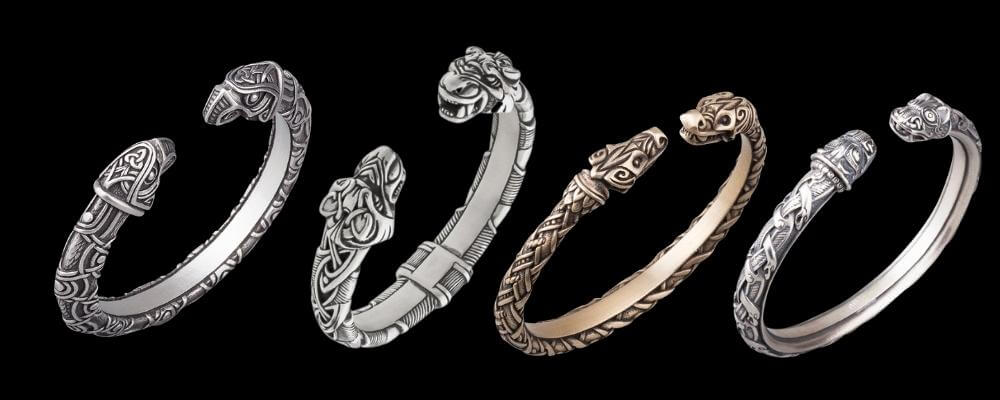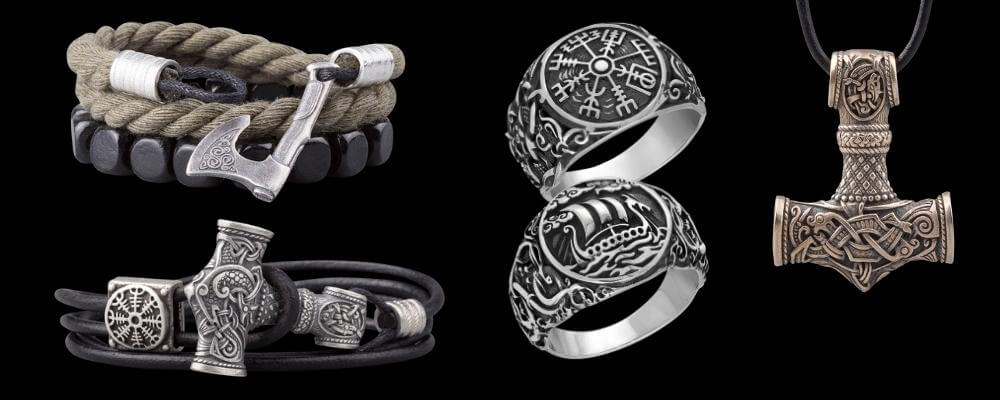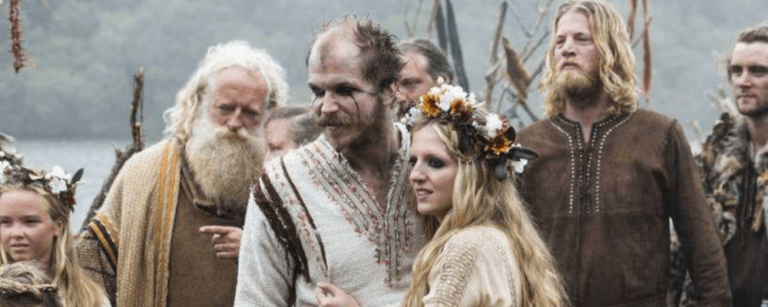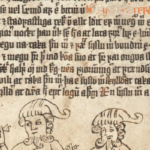Marriage was an institution that was at the heart of Viking life, so weddings were important events that marked the change in social allegiances and status precipitated by the marriage.
The Vikings also had a feasting culture, and feasts were important for solidifying the community. And a wedding was a good excuse for a feast!
Not a lot of evidence survives about Viking weddings, and what individual weddings would have looked like would have depended on where they were, when in the Viking period they took place, and also the wealth and social status of the families involved.
But let’s take a look at some of the things that we do know about the ideas and rituals of Viking weddings, including things such as vows, the exchange of rings, special dances, and the drinking of quite a lot of mead.
Generalizing About Viking Weddings
Before we jump in, let’s just raise a word of warning on generalizing about Viking weddings. While some elements of the wedding would have been fundamental, such as hallowing the union in reference to Thor, other elements would not have been.
When you read about Viking weddings you will often see references to elaborate ritual bathing practices and the exchange of swords. But these specific rituals would have been limited to the elite. As we have talked about several times, most Vikings would not have been able to afford a sword as they were expensive both in terms of material and craftsmanship.
But the nature of the historical record is that we have more information about the elite than we do about the common person. People wrote about kings and chieftains, and their grand houses and burials have left behind more evidence than the modest houses and burials of the commoner.
So, all the elements of the Viking wedding that we are going to look at below should be taken in context. These are things that would have been done by the elite. Your common Viking probably skipped a lot of these rituals or engaged with them on a significantly more modest scale.

Viking Marriage For Love?
While there are always exceptions to the rule, Viking marriages were not generally love matches.
Marriage was a way of bringing together two families to enhance each other’s status and wealth, and a way of controlling reproduction to secure inheritance.
While the feelings of the young couple were probably not completely discarded, financial considerations and alliances would have taken priority.
Viking Women, in particular, may have had little say in their own marriage. Women were largely seen as the property of their fathers, whose “ownership” was then transferred to her husband. It is telling that a husband had the right to kill both an adulterous wife and her lover, while there was no penalty for men who had relationships outside the marriage.
While women had the right to initiate divorce, which was a relatively simple process of summoning witnesses and declaring oneself divorced, in reality, a divorced woman would have to go back to her family home, so it would be difficult for her to leave her husband without the support of her family.
Marriage Negotiations
Because marriage was largely a business transaction, it should be unsurprising that they required quite a bit of negotiation. Marriages had long-lasting legal implications in relation to property and inheritance.
Normally the groom’s family would meet first to agree on what the financial assets of the groom would be, and what the groom’s parents would be able to provide as a wedding gift (“mundr”). They would also consider what kind of dowry they would request from the bride’s family, and what they would be willing to accept.
The groom and the important male members of the groom’s family would then take this proposal to the father or guardian of the bride. If the match was more or less favorable, and the terms more or less acceptable, the two families could then iron out the final details.
Sources suggest that in the 11th century the minimum bride price in Iceland was eight ounces of silver, and in Norway was 12 ounces of silver. But again, who exactly this rule would have applied to and who would have enforced it is unclear.

Setting A Date
Once everything was agreed upon, the family could then set a date. The wedding would usually happen on Fridays, as this was the day sacred to Frigg, the wife of Odin and the goddess of wives and wifely duties.
Big weddings that would have been held by the elite would then have included several days of feasting. And even more modest weddings may have run for several days if family and friends traveled some distance to attend and witness, and would therefore stay for a while.
It could take quite a lot of time to plan a big wedding, not least to ensure that there would be enough food and beer for all the guests. Some sources suggest that weddings might take up to a year to plan.
Bachelor Parties?
While there are no records of young Viking grooms being taken to strip clubs or brides dressing up in L plates, the Vikings do seem to have had their own versions of bachelor parties. Before the wedding, the bride and groom would be separated, the bride accompanied by female family members and friends, and the groom by male family members and friends.
Each party would then engage in rituals that would help the bride and groom throw off their previous lives as youths and become ready for their lives as a couple.
There are records of young brides having steam baths to open their pores, and then plunging into cold baths to close their pores. Other beautifying rituals to prepare the bride for the big day would probably also have taken place.
Meanwhile, there are stories that suggest that grooms may have gotten up to a bit of mischief, much like modern-day bachelors. One groom is described as breaking into a family tomb to steal an ancestral sword.
The Wedding Dress
No evidence survives for the bride or groom wearing specific clothing, such as white dresses for the bride, but there do seem to be traditions around the hair of the bride.
A maiden would have worn her hair long and flowing, enhanced by a bridal crown made from leaves and flowers. In the later Scandinavian period, these were replaced with silver crowns that were usually heirlooms kept within the family.
There is some evidence to suggest that at least some grooms carried an ancestral family sword during the wedding ceremony. While this would not have been true of all Vikings, if the family did have a prestigious weapon to their name, it may have been carried by the groom as part of the ceremony.
The Ceremony
The ceremony itself would not start until the bride price and dowry were officially exchanged, in front of witnesses. Only when business was done could the religious ceremony begin.
A selected elder within the community would fulfill the role of officiant. The Vikings did not have “professional priests” as is common in Christian society. Rather, community leaders took on the role as necessary.
They would begin by summoning the attention of the gods to bless the union with a sacrifice. It was traditional to sacrifice a goat to Thor, a sow to Freya, or a boar or horse to Freyr.
Whichever animal was sacrificed, and later eaten at the feast, the blood was drained into a bowl and consecrated in some way. A bunch of fir twigs was then dipped in the blood and used to splatter the couple with the blood, conferring the blessing of the gods.
At this point, the bride and groom may have exchanged keepsakes. There are stories from the later Scandinavian period of the bride and groom exchanging swords, or even rings.
The Party
After the ceremony, there was, of course, the party, which the family of the bride and groom would host jointly for their families and community. It would be the first time that the group would come together under the terms of their new social alliance.
There are some stories that the parties of the bride and groom had to race back to the location of the wedding, and that whoever arrived last had to serve the other party beer for the rest of the night. While the specifics of the games may have varied, innocent competitions like this were probably common.
At some point during the feast, Thor’s hammer would be called upon to bless the union and the new social arrangement. In some circumstances, a simulacrum of Mjolnir may have been brought forth for the purpose, while in others the calling of the hammer would have been purely metaphorical.
But what seems to have been common at all wedding feasts was a significant amount of drinking! The family had to provide enough bridal brew to keep everyone at the party in good spirits for a few days.
Consummation
It was quite common in ancient European cultures that the consummation of marriages had to be witnessed. Exactly what this witnessing entailed is unclear, for example, whether the witnesses were required to be in the room, or just nearby to be aware of what was going on.
In later Scandinavian culture, it was common that six witnesses were required to confirm the marriage. The Vikings may well have also had this practice.
Can You Get Married Like A Viking Today?
Many followers of the Asatru religion and just fans of Viking culture in general choose to get married according to Viking customs today. What exactly those weddings look like depends, as there is no strict standard for Viking weddings.
The most important element is to call on the Norse gods to witness and bless your union, and to embark on the new adventure with the Viking spirit in your heart.








